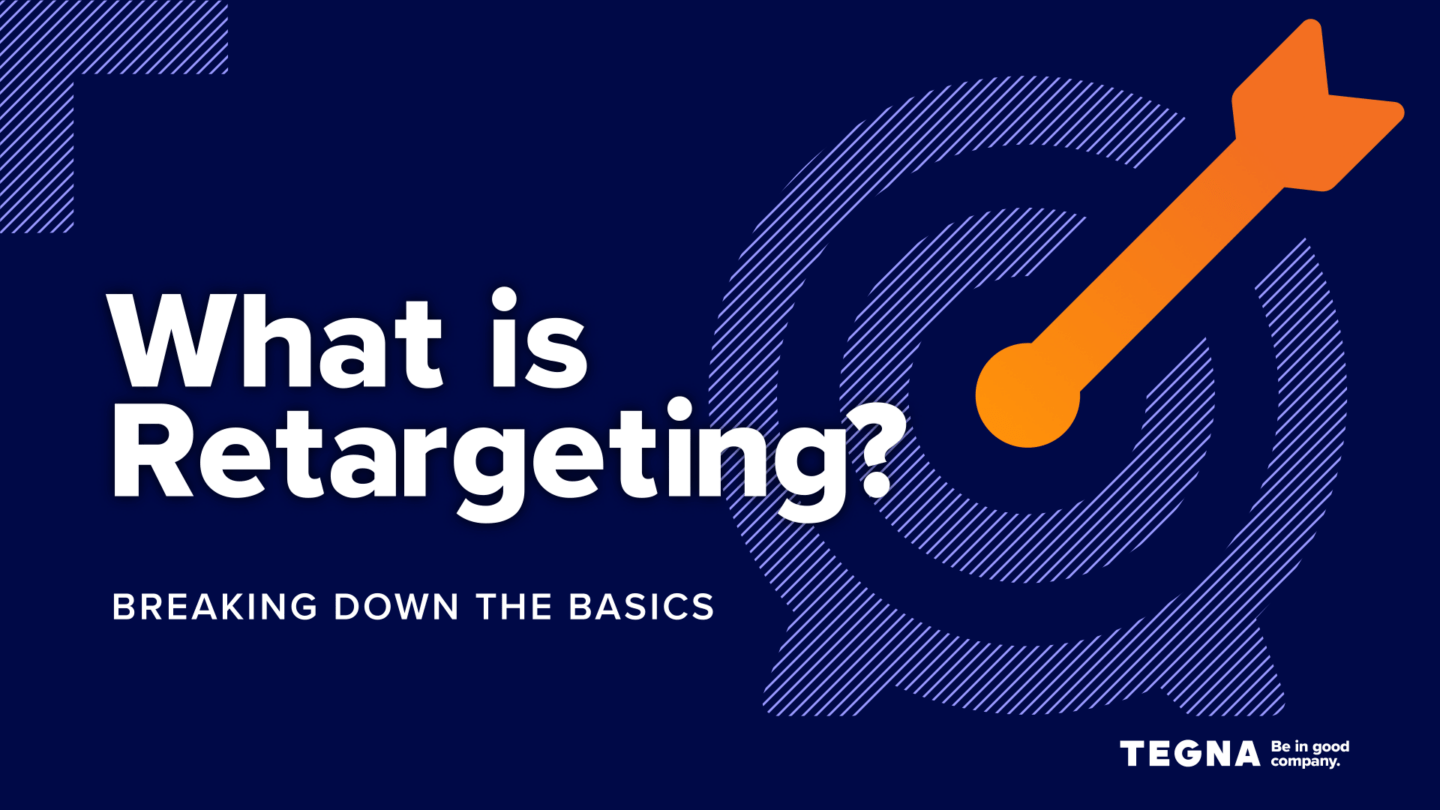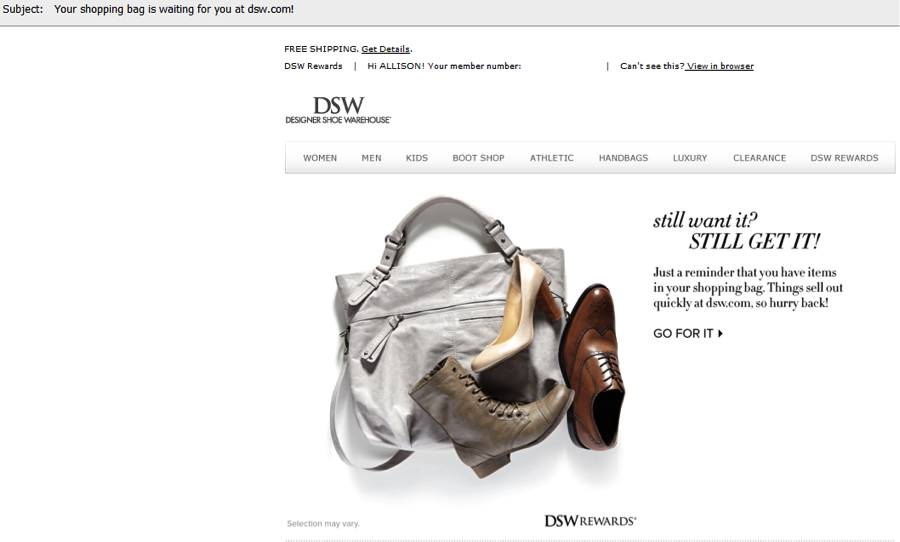What is Retargeting? Breaking Down the Basics
Retargeting provides a great opportunity to reach potential customers who have shown interest in your products and services, and give them multiple opportunities to convert.

It’s probably happened to you before. You’re looking at a pair of shoes online, then suddenly … those shoes are everywhere. They’re on your favorite websites, in your social media feeds, and even in your inbox, complete with an email reminding you of all the reasons you want to buy these shoes.
How is that pair of shoes able to follow your online footsteps?
It’s called Retargeting, and as an advertiser, it’s a great opportunity to reach customers who have shown interest in your products and services with second, third, and fourth chances to convert.
What is Retargeting, and How Does It Work?
In technical terms, Retargeting is a piece of JavaScript code (which can also be referred to as a Pixel) that is placed in the footer of a website and leaves a cookie in the browser of every visitor to the site. For example, if a Zappos.com website visitor looked at a pair of high heels, a cookie from Zappos.com will be left in their browser.
Next, the website visitor will be tracked as they browse through other sites. Because they are being retargeted, they will see ads for those high heels on their Facebook page and on other sites they visit. However, these ads will no longer appear if they clear the cookies and cache.

Different Types of Retargeting
There are a few different types of retargeting used by marketers to increase brand awareness online and attempt to convince a potential customer to convert into an actual customer.
Site Retargeting
As seen in the example above, site retargeting is the process of visiting a specific website, dropping a cookie, and tracking the visitor across other sites.
Email Retargeting
Email retargeting effectively convince a customer that’s one click away from buying something to push “Complete Purchase.” Email retargeting occurs when someone adds items to their online shopping cart but doesn’t follow through on the purchase before leaving the site – a.k.a. Shopping cart abandonment.
If they are a registered user of the site, the company will send an email reminder of the items in their cart after a few days – and might even offer a discount on those items to encourage the purchase. For example:

Search Retargeting
Also known as SEM/SEO retargeting, this is similar to site retargeting because it’s based on user behavior. However, with Search Retargeting, ads served to users are based on recent search queries, not recent site visits.
For example, if someone were to search for “gold heels,” they could be served ads similar to the Zappos ads without ever visiting the Zappos site.
Social Media Retargeting
Social media retargeting uses social media platforms’ advertisement capabilities, for instance, Facebook Ads and Linkedin Ads, to target users who have visited your website or interacted with your social media content.
Pixel-Based Retargeting
Using pixels, you can track website visitors and quickly retarget them as they continue browsing the internet. For example, if you visit Amazon and look through desk chairs, you leave a cookie that will be used to retarget you with Amazon desk chair advertisements on other sites.
Contextual Retargeting
Contextual retargeting involves targeting an audience that has interacted with content related to your offerings. For example, if your business sells cosmetic bags, you might want to target customers browsing a beauty products site.
What is a Retargeting Strategy?
A retargeting strategy is a comprehensive plan for connecting with potential customers at all points in the marketing funnel. For instance, an interaction with an Instagram post could trigger an Instagram ad for your company to display the next time the user opens the app. You could use email retargeting to promote new products for a current customer. A retargeting strategy combines all types of retargeting to achieve a marketing goal.
Why Is Retargeting Important?
It’s super important to find ways to encourage visitors to come back and make a purchase on your site. In fact, the stats from Digital Information World are pretty favorable. It turns out:
- Retargeted ads increase the chances of conversion by 70 percent.
- The click-through rates of retargeted ads are ten times higher than display ads. Meanwhile, email retargeting click-through rates are anywhere from 3 percent to 5 percent higher than standard site targeting.
- Retargeting can lead to a 147 percent higher conversion rate.
- Nearly 72 percent of online shoppers will abandon their shopping carts. With retargeting, 26 percent of those shoppers will return to complete their purchase. Without retargeting, only 8 percent return.
- An average of 30 percent of shoppers will react positively to retargeted ads. What’s more, 25 percent of those shoppers say they enjoy retargeted ads because they serve as helpful reminders.
Setting Up Goals for Retargeting
Determining goals is an important component of any campaign. Below are some KPIs your brand can track to determine success:
Increase Conversions
A conversion is counted when a potential customer completes a defined goal of an advertisement. This goal could be a form submission, a social media follow, an email subscription, or anything you define as your ad’s initial goal. Increasing conversions means increasing ad success!
Generate Brand Awareness
Retargeting allows you to expand brand awareness beyond owned channels. Say a customer is looking for a new wallet. Maybe they were recently reading a personal finance article that had ads for your leather wallets. Since the customer was exposed to your brand, they are more likely to visit your site to purchase their new wallet.
Reduce Cart Abandonment Rates
Do you have customers who add products to their online shopping cart and but never hit purchase? Retargeting allows you to reconnect with these customers and remind them about the products waiting for them in their cart, thus reducing your website’s cart abandonment rate.
Increase Engagement
Increasing customer engagement is important to building brand recognition and trust. Setting a goal to increase engagement through retargeting campaigns will help your brand grow in presence and in sales.
When To Use Retargeting In Your Marketing Strategy
Retargeting is an integral part of developing a successful marketing strategy. Retargeting can be used as a part of a specific advertising campaign to promote a new product or service. Retargeting is also a great way to build brand awareness when you are trying to grow your customer base.
Tips for Effective Retargeting
Below are some tips and best practices for more successful retargeting campaigns.
Leverage Contextual Data
Google plans to go cookieless in 2024, and many other platforms are following suit. However, many retargeting campaigns leverage third-party cookies to display relevant messaging and information. By leveraging contextual insights, such as the data from a page, your company can still create successful retargeting campaigns without the need for third-party cookies.
Segment Audiences Based on Interest
Creative should cater to the interests of the consumer. If your company is trying to reach multiple types of people, be sure to have different versions of your creative available. Consumers should be segmented based on criteria such as interest to ensure they receive the most relevant messages possible.
Don’t be Invasive
Personalization works well with targeted ads. However, many brands struggle with creating ads that don’t feel invasive. According to McKinsey, only 33% of consumers believe that organizations are using their personal information responsibly. When personalizing ads, the content should be about making the customer experience better, not personalization, for the sake of personalization.
About TEGNA
TEGNA offers Retargeting through Audience Marketplace. With our extensive targeting capabilities, you can reach an audience that is highly likely to interact with your brand. Target audiences based on demographics and behaviors, a specific location, an event taking place, or retargeting. Then, accurate data provides actionable insights to maximize campaign effectiveness. Learn more about Audience Marketplace and how it can work for your business.










